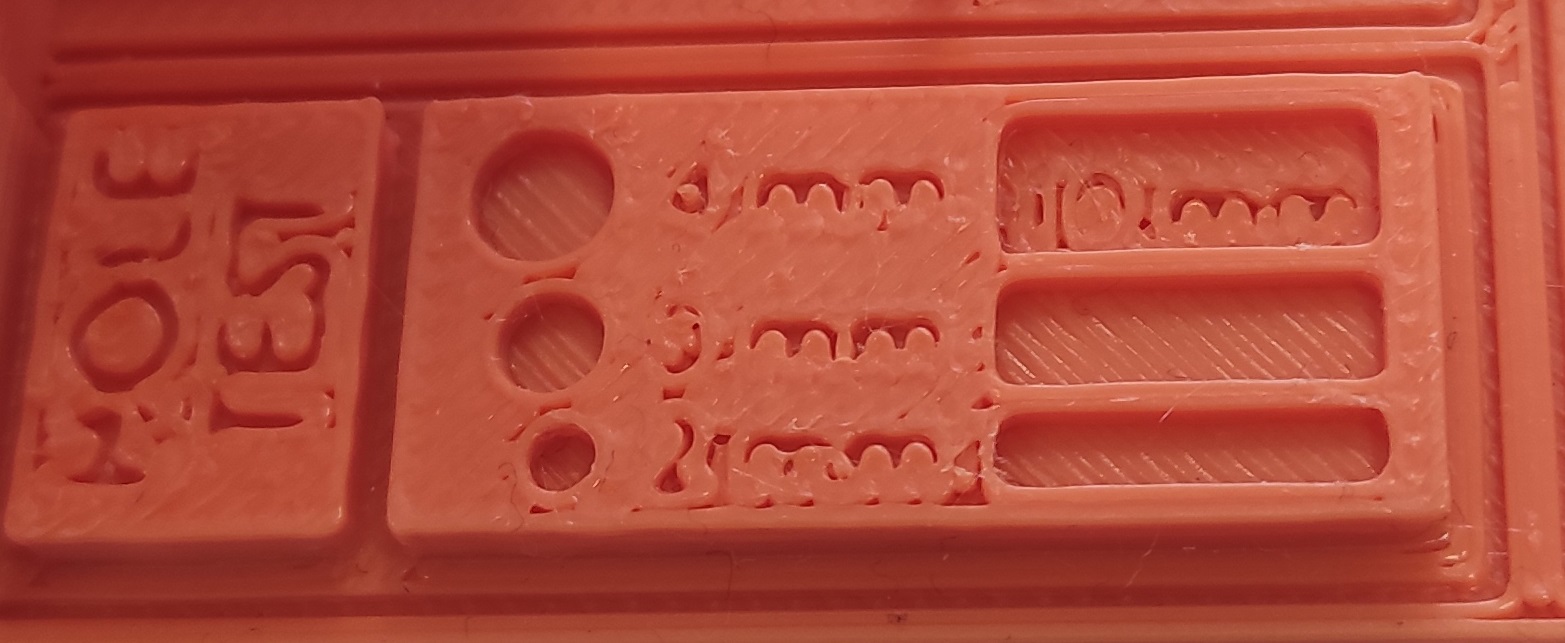Testing Parameters
In this Assignment we're going to test the design rules with some easy parameters. All Designrules are tested with the standard PLA Settings of the Printer and some PLA. Also all results are depending on the Filament type and print settings.
- Tolerance
- Overhangs
- Bridging
- Growing/Shrinking
Tolerance
Tolerance in 3D printing refers to the allowable deviation in dimensions between a designed model and the actual printed object. It defines the degree of accuracy and precision a 3D printer can achieve.
To test the Tolerance of the 3D-Printers, were going to use "A Better Customizable X-Y Tolerance Test" by PhilKloppers on thingiverse
This test, tests the tolerance with an print in place swivel mechanism. The space between the inner and outer part resambles the Tolerance. This test, test 0.1mm to 0.4mm in 0.05mm increments

Overhang
In 3D printing, an overhang refers to any part of the printed object that extends outward beyond the layer below it without sufficient support.
For this and the next tests we are going to use an multipurpose testobject: *MINI* All In One 3D printer test by majda107 on thingiverse
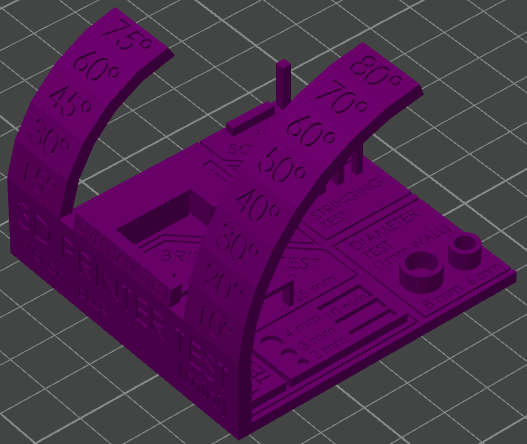
Bridging
Similar to Overhangs is bridging. Here prints the printer 90° in the air and connects two "posts" together.

Growing/Shrinking
In 3D printing, "shrinking" and "growing" are terms used to descibe variations in the printed item's true dimensions and design sizes in digital space.
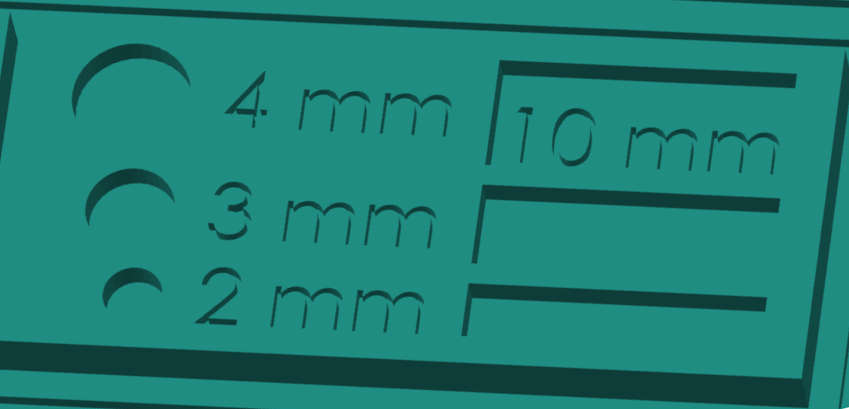
Ultimaker S5
The Ultimaker S5 is one of our most used printer, because it has the biggest Buildvolume and we have 4 of them currently running.
For this Printer you need Ultimaker Cura. We set the material to Generic PLA on an 0.4 AA Printcore and the infill to 15%. After slicing, We started that the print, which will need 3 h 53 min.
Tolerance
From our test, We can say that between 0.3 mm and 0.4 mm is a good range, where the inner piece is comfortably fitting and still moving/ rotating. Smaller that than it will get too tight to the point that it will even become one piece (like 0.1mm tolerance)
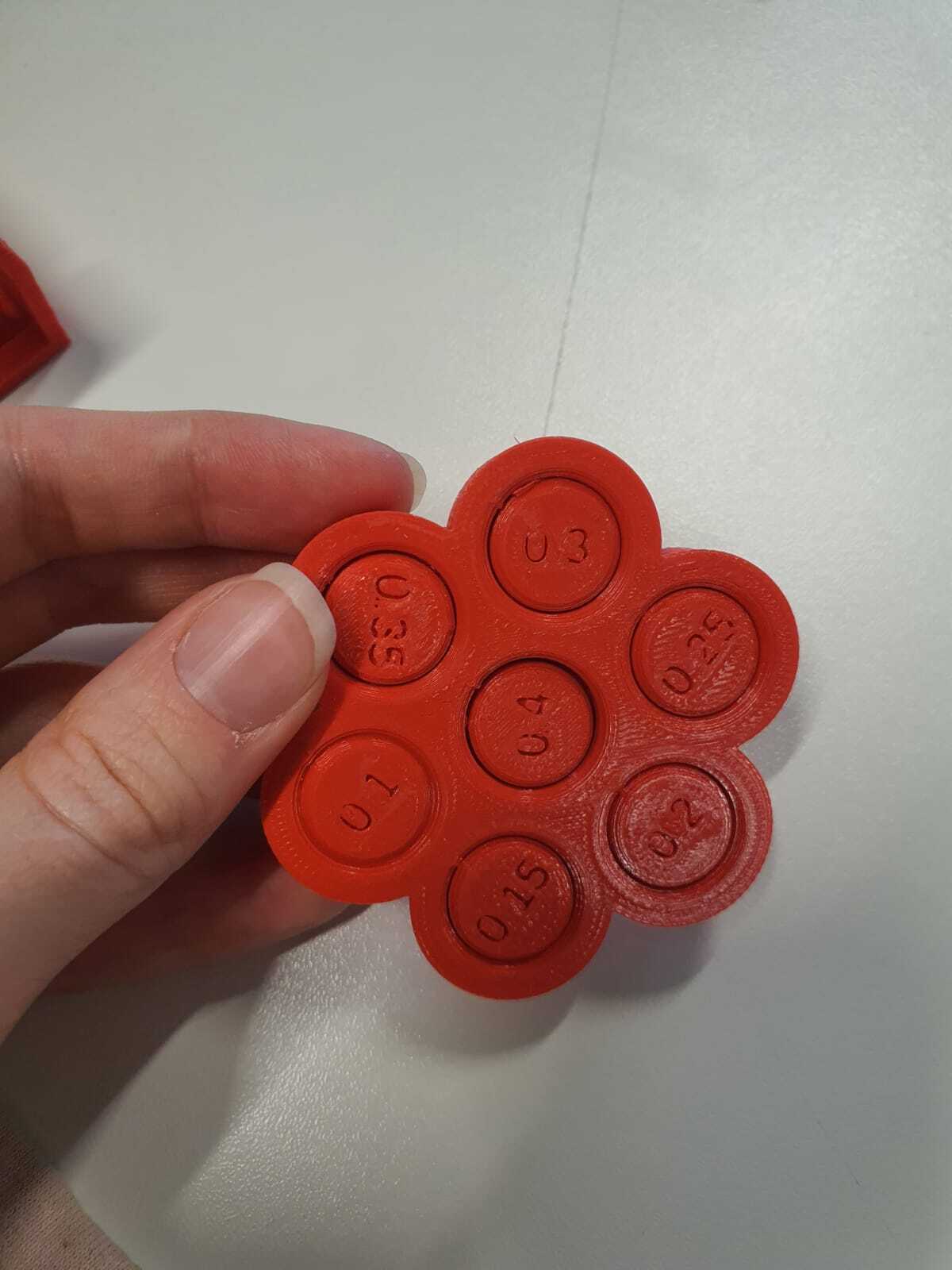
Overhang
From our test, We can say that up to 30°- 40° the print was quite clean. However, at bigger angles, the material starts to have spaghetti-like structure hanging under it.
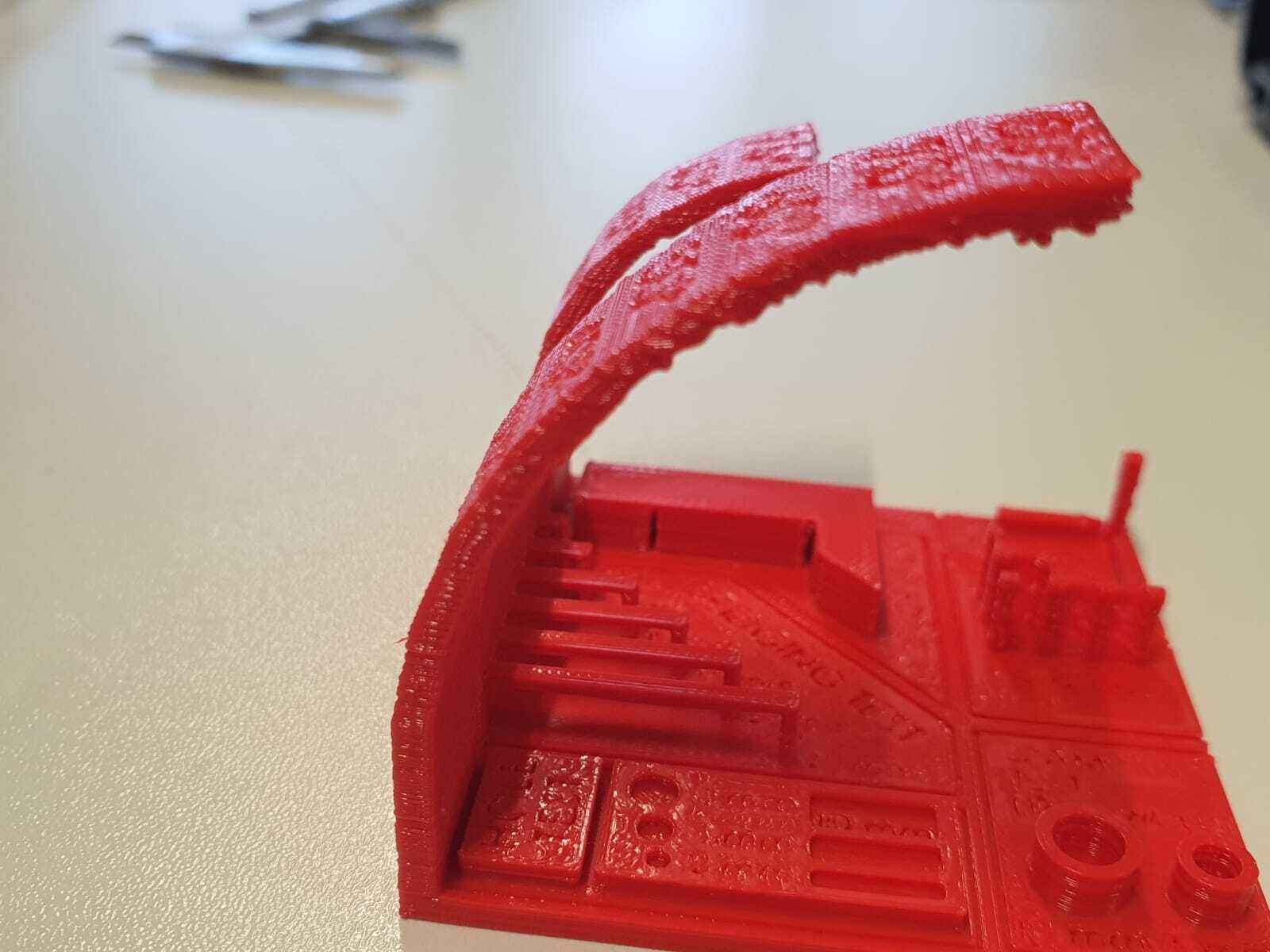
Bridging
From our test, We can conclude that up to 20 mm the bridge actually stays on the same line. After than it starts to sag in the middle, which would affect the quality of the print.
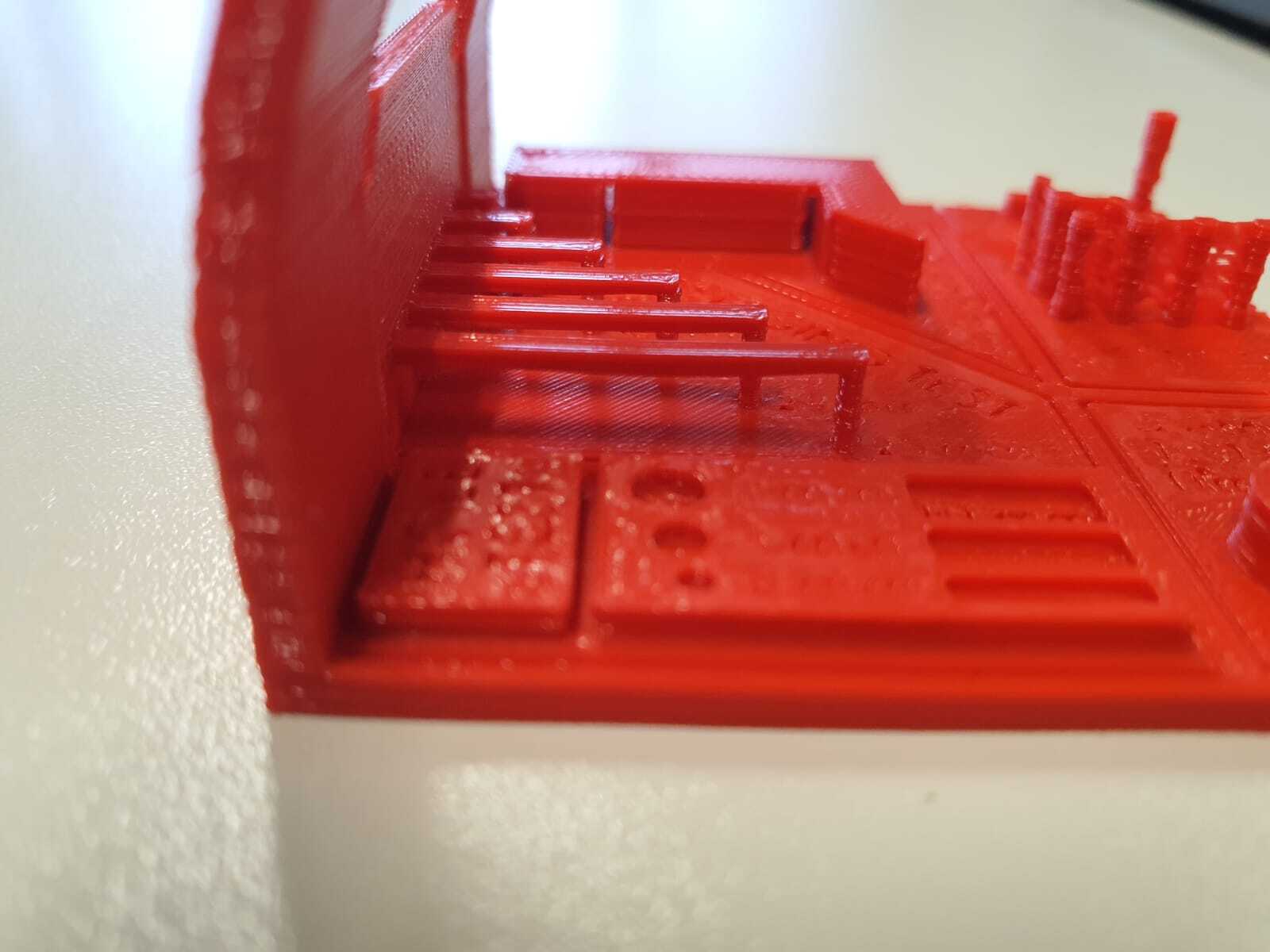
Shrinking
From our test, We can conclude that the shrinking Decreases with the larger diameters. You can also see, that the hole is not hundred precent round.
- 10mm width(all 3 width) = 9,8mm
- 4mm hole = 3,7mm
- 3mm hole = 2.65mm
- 2mm hole = 1.55mm
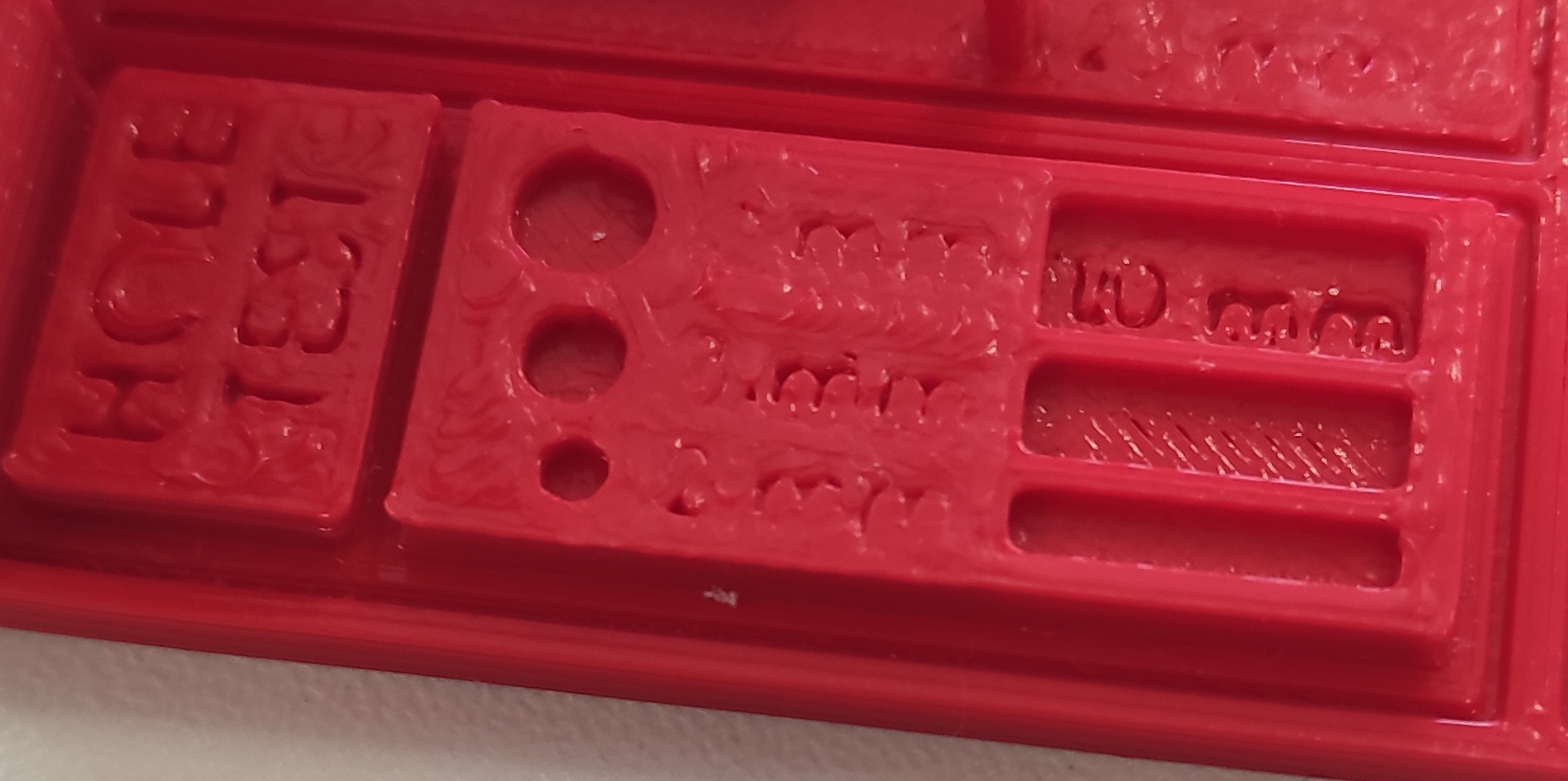
Creality K1
This printer is not in the lab. It is at Mika's Place. Because he uses this printer alot and it's also like the K1Max in the FabLab we tested this printer as well
Tolerance
For the K1 the test result: 0.2mm works good but 0.25mm is a bit smoother
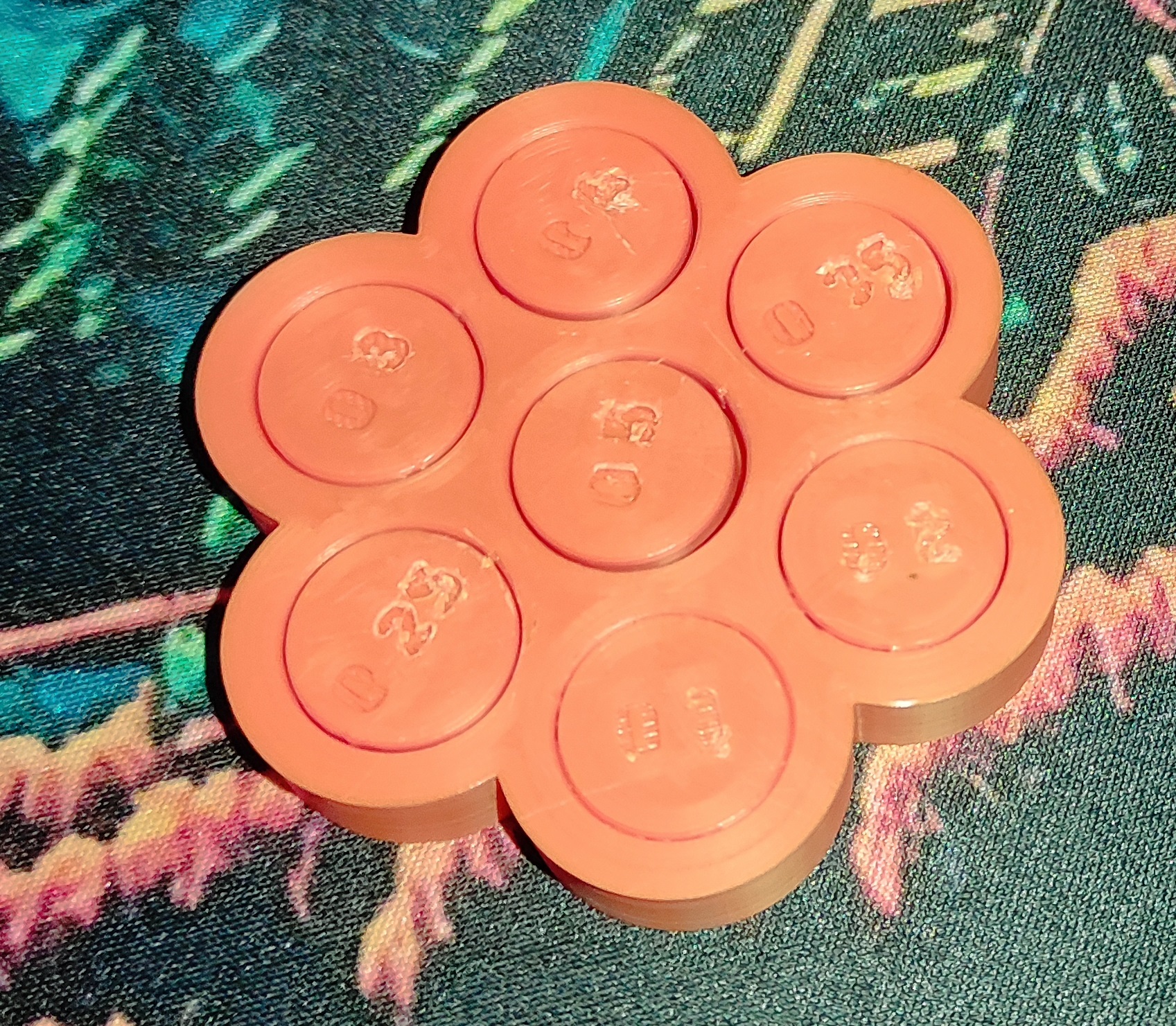
Overhang
Advantage of the K1 is the sideblower. This allowes the printer to print steep angles. But at 70° the print starts sag a bit.
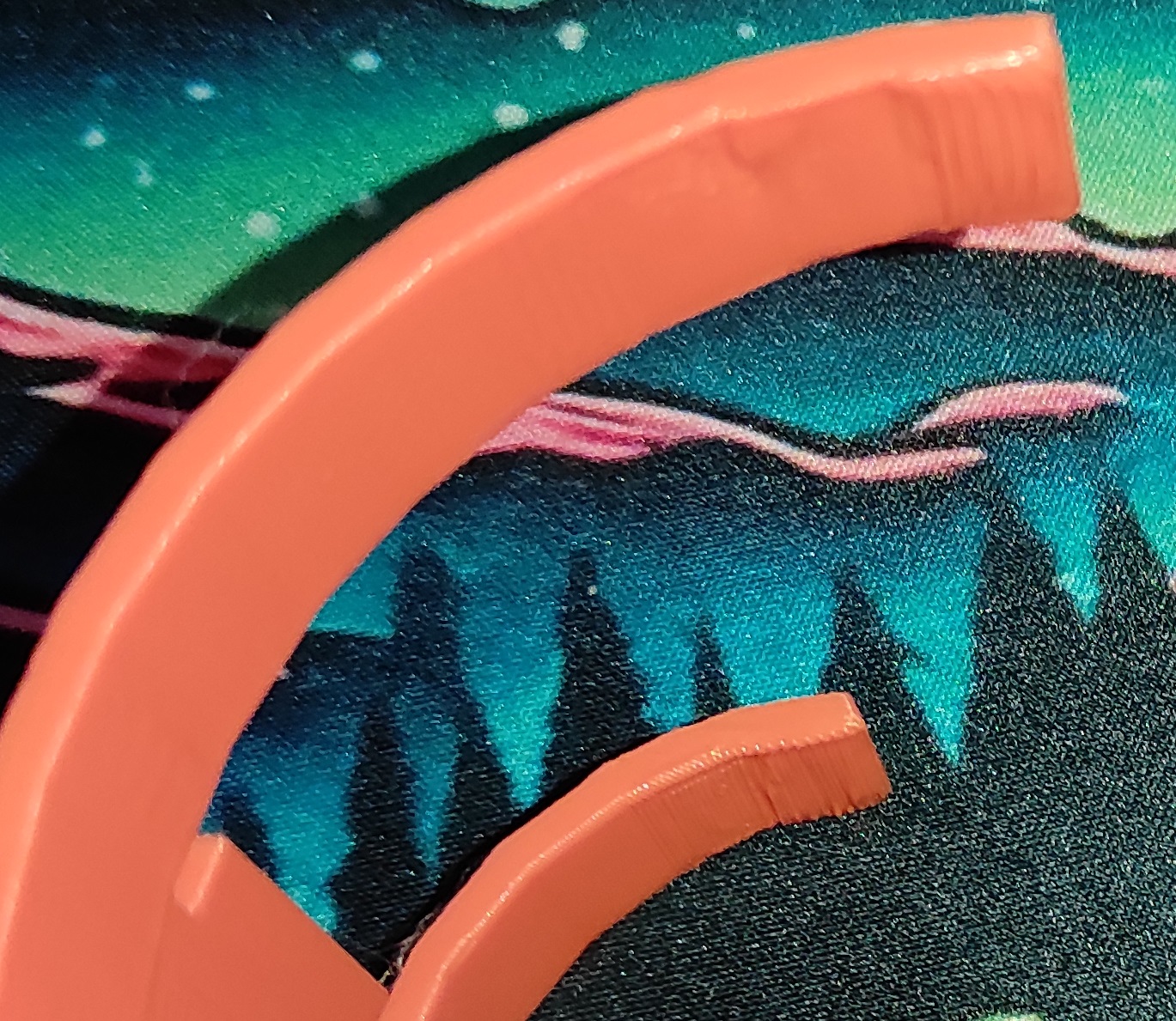
Bridging
with this test we cant get the limits out of this printer.Even the 25mm Bridging looks incrdible.
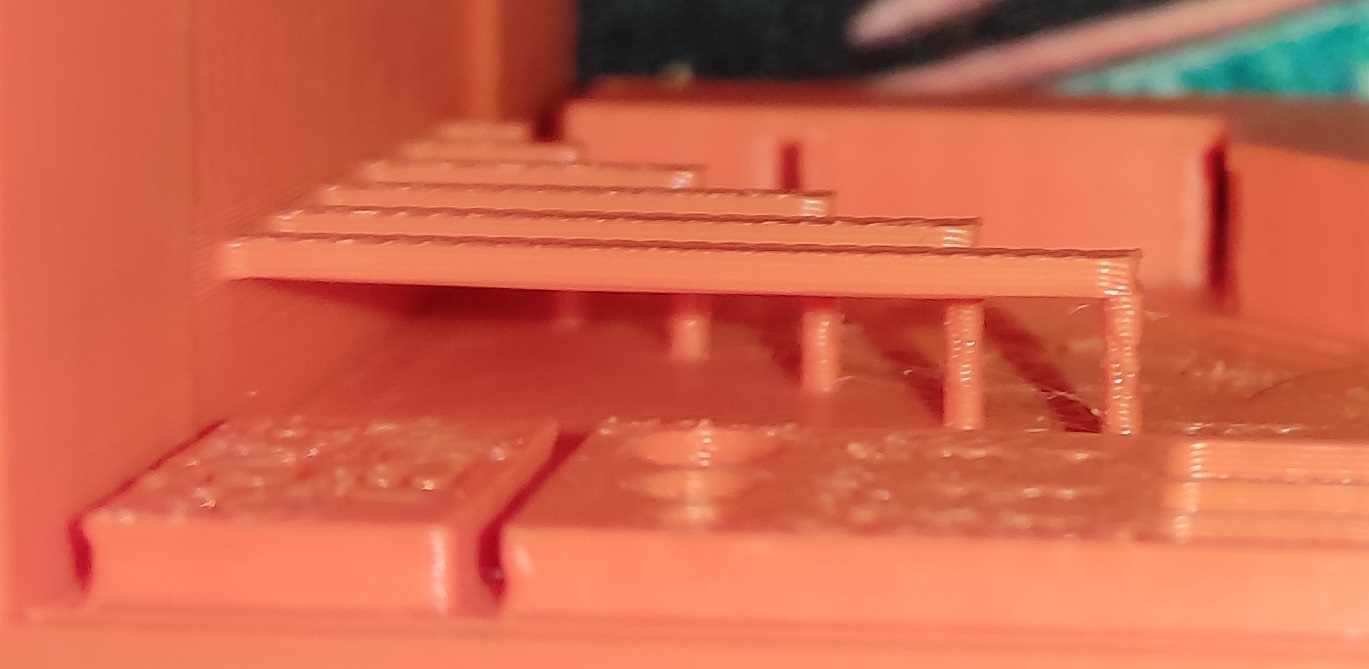
Shrinking
The reult of the shrinking test is also quit acceptable. But also here with smaller diameters we need to increase the compensation
- 10mm width(all 3 width) = 10mm
- 4mm hole = 3,8mm
- 3mm hole = 2.7mm
- 2mm hole = 1.6mm
